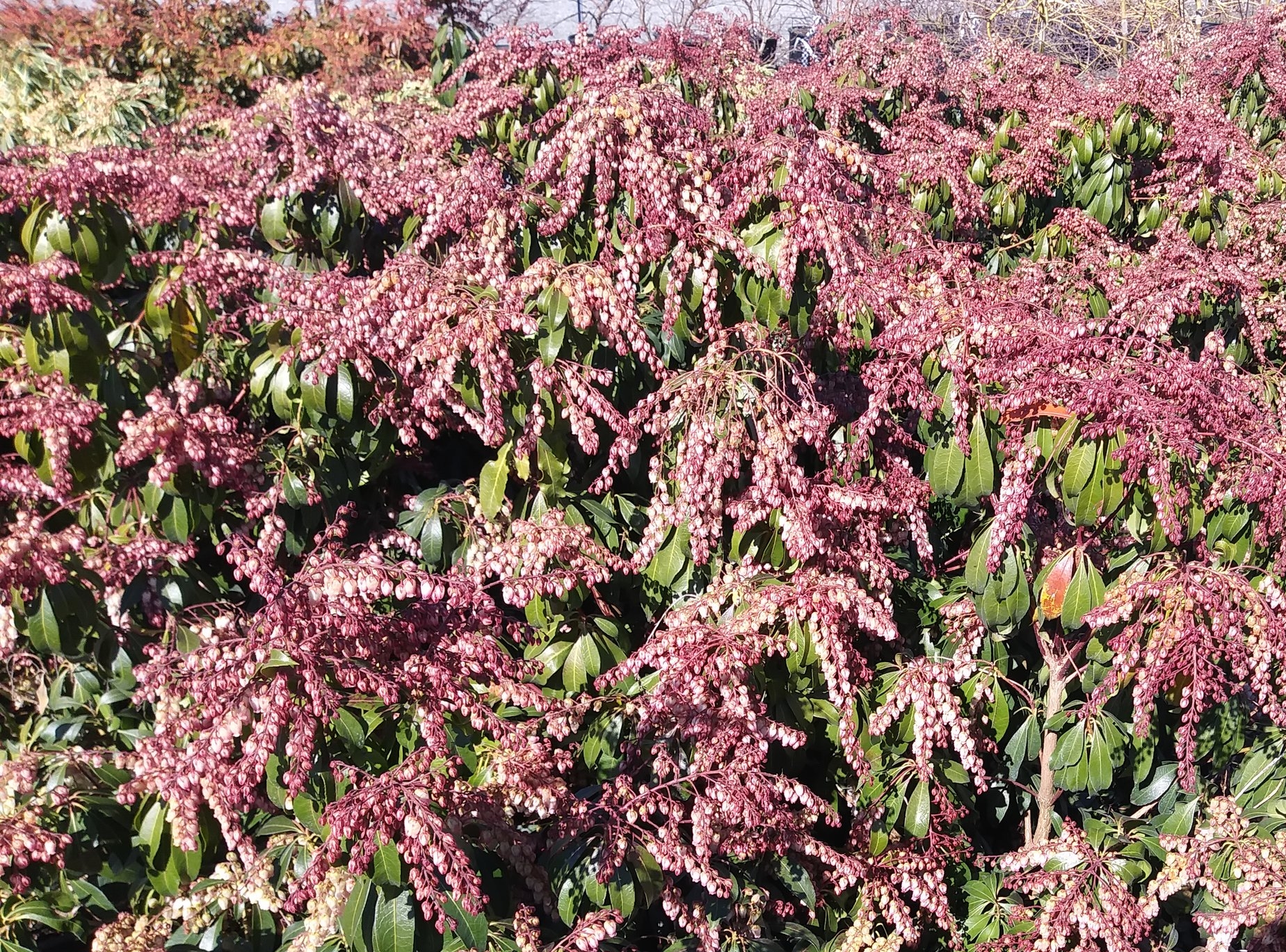When I look at my own yard, it is like a disorganized design flop, because I use the space around my house not just to grow everything that suits my whim and fancy, but all of the varieties I hope to use in garden design plans, combinations I want to try out together, and random color harmonies I am playing with. It’s like a free spirited plant lab. In the gardens I design, the plans succeed for a number of reasons, though I may have skipped over them in my own yard, they are tried and true strategies any garden enthusiast or Do-it-yourselfer could put to good use.
#1- Plant more than one of everything you grow.
Unless is a specimen tree, in general Plants look better in masses and groupings. Plants naturally grow in plant colonies or plant communities, bring a natural feel into your garden by massing plants together by the same variety. Try to buy odd numbers of plants, even if it is just three, a trio of plans have much greater appeal then one alone. Five or seven look great!
#2-Create a foundation of Evergreen plants
to create a backbone of plant structure in your landscape. If all of your plants die back to the ground each year, start with a small tree with interesting winter bark, or some shrubs with winter berries. Consider plants with features that look great in the winter in your area, like the Lily of the vally shrub shown here-Pieris japonica, Bush Germander, Mahonia, or Tea tree.
#3- Use the rule of threes!
Your brain automatically divides spaces in half a judges the natural beauty of symmetry, but add in a third bush, tree, or same color plant and you will break up the symmetry by drawing the eye to three different landing points, which your brain will naturally recognize as artistic!
#4-Make your garden beautiful all year round.
Walk through your garden and see what you have already and make a note of when it blooms. Then, for each area of your garden make sure you have plants that will bloom or provide interest throughout the year. For example, Japanese anemones are beautiful in the fall they are a little lackluster in the spring, but by combining them with a planting of Persicaria Red dragon, you can match the dramatic structure of the plant and have visual interest in early spring and into summer when the anemones come on. Many early spring bulbs can be followed by late summer perennials
#5-Create a color Trio
Choose one or two tones to be you main color scheme and then choose a back up hue. For example maybe you love orange and blue, add purple to give it an extra pop. Maybe Red and purple appeal to you,add white for a light elegant note. If you want your garden colors to feel fun and invigorating, mix yellows and reds and fill in with other warm tones like pink and orange. For a more subdued peaceful feeling mix tones of green, like yellow green, gray green and variegated foliage to give you garden a sense of peace. Cool tones like Blue and purple will feel relaxing and intriguing.
One of the keys to successful color combinations is choosing a consistent back note color for your garden. Yellow and white both brighten up areas and have the quality of tying together everything else planted in the garden space and making it come together with unity and appeal that makes everything look like it naturally comes together to form one connected garden experience. Reducing your color pallet will always make your garden look more professional and pulled together with polish and appeal.
Try these tricks to get your spring garden of to a great start. Comment and let us know how they work for you.
Happy Gardening!






